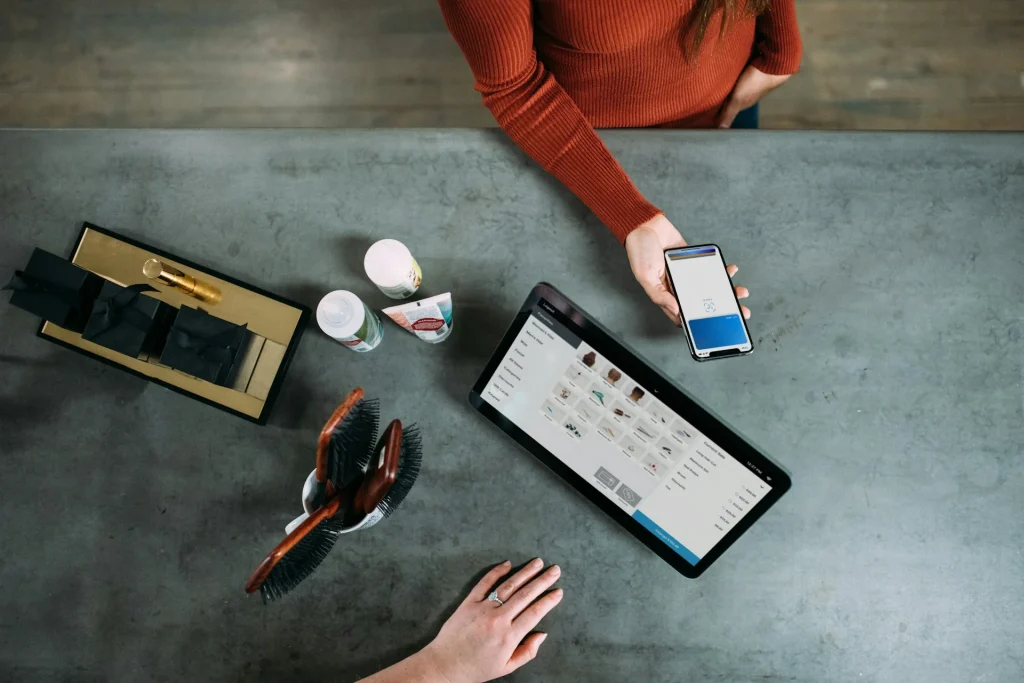Table of content
Do you think about the mass culture-inspired fear that robots will replace a human manual worker in any given sphere when opening this article? Good news then: these claims are as hyperbolic as they are impractical. While technology is feared for complete or partial replacing a human worker, there are two crucial things to remember about AI. Firstly, it’s supposed to help your restaurant, not destroy it; secondly, it works at the verge of its capacity alongside humans, not instead of them.
Picture the ideal variant of every technical application you’re using as a restaurateur: in a nutshell, main artificial intelligence’s goal is to help you approach this excellence in any tech stack you’re using. Restaurant intelligence agency has been growing the recent years, which is why it makes sense to reflect on it in the article below. Let’s go further into how exactly: in this article, you’ll discover what AI applications are already there for a restaurant business, how AI in restaurants will benefit your chefs and your guests, and what you should expect in the next decade.
Common Industry Pains AI Can Help Tackle
Artificial intelligence steps into food industry from different angles, streamlining the work of different actors. From chefs to waiters and guests to food critics, every party involved will experience the impact.
Inventory Management and Food Waste
If you overorder, the excess food spoils before it can be used; underordering, on the other hand, makes menu items unavailable, potentially disappointing your guests. Inventory management often requires predictive capabilities and precise analytics.
AI-driven inventory management systems can provide such precision. They will:
- Predict the quantity of food and supplies needed with greater accuracy by analyzing historical sales data, trends, weather, and events.
- Automate ordering processes, ensuring that restaurant orders only what it needs.
- Identify patterns in food waste, enabling restaurants to adjust their purchasing practices and preparation methods to reduce waste.
Labor Shortages and Staff Scheduling
Given that the restaurant industry faces a high average employee turnover rate of about 75%, frequent updates to local labor laws, and continuous challenges in recruiting and maintaining staff, the prospect of using technology to alleviate some of these issues (and their associated costs) is understandably appealing. The issue of labor shortages, high turnover rates and the complexity of creating efficient staff schedules that match customer demand without over- or understaffing is something AI can help with:
- Predict busy periods with high accuracy using historical data and future reservations, allowing for optimized staff scheduling.
- AI-powered tools can also assist in onboarding new staff more efficiently and managing shifts, reducing the administrative burden on managers.
In the near future, these same applications will be able to use the data your restaurant generates to do things like create labor-optimal employee schedules.
Compliance and Safety
There are several different areas of restaurant business that require different checks and impeccable compliance: apart from an obvious legal side, it’s also workplace safety, Hazard Analysis and Critical Control Points (HACPP), as well as food safety and hygiene monitoring. Tracking compliance with all of the mentioned manually is far from possible, which is where a range of AI tools enter the game:
- AI-powered surveillance systems use cameras and image recognition technology to monitor kitchen operations in real time. AI algorithms analyze video feeds to ensure that staff comply with food safety practices, such as wearing gloves and hairnets, washing hands properly, and cooking food at the right temperatures.
- AI for ergonomic assessments can analyze video footage to assess the ergonomics of kitchen and dining area setups. It can identify potential risks for slips, trips, and falls or recommend adjustments to workstations to prevent strain injuries among staff.
- Smart compliance platforms automate the management of compliance documentation, from food safety records to employee health certifications. These platforms can ensure that all necessary documents are up-to-date and easily accessible during inspections.
- Digital HACCP management systems streamline the implementation of HACCP systems by analyzing data from various sources, such as temperature logs and cleaning schedules, to identify potential hazards and control points in food preparation processes.
Existing AI Capabilities For Restaurants
Guests-oriented enhancements
Turn up in search
Delivering and being featured on delivery applications used to be innovative; today, the extra mile for a restaurant to be ordered keeps extending with the advent of customer-oriented technology.
Take Halla for example. This app pushes the boundaries of the usual by combining several food delivery services. It suggests relevant cafes and restaurants near the user, guided by their location and a defined “taste profile.” For restaurants, being accessible through such platforms increases the likelihood of being recommended as a “place you might enjoy.”
Make your dining distinct
Marking a categorized menu, where a guest can pick anything based on their dietary preferences has become a custom for every client-oriented restaurant. But what about offering customized dining experiences based on dietary preferences, past orders, or even mood? This is something AI analysis can detect.
Some restaurants are experimenting with AI to create interactive dining experiences. For example, projection mapping on tables can turn dining into an immersive experience, with visuals changing based on the dish being served. These innovations can transform a simple meal into an unforgettable event, appealing to customers looking for dining experiences that go beyond the food.
Take Le Petit Chef, for example. This international AI restaurant chain uses 3D projection mapping technology to bring a tiny animated chef to life right on diners’ plates. The mini chef ‘prepares’ the dishes on the actual plates before the real dish is served, combining storytelling with dining. This concept has been featured in various restaurants worldwide, offering a fun and engaging prelude to the meal.
Probably the most exalted embodiment of this is AR menus, which represent a leap forward in menu presentation. They let guests use their smartphones or AR glasses to see realistic, 3D models of menu items before ordering. It’s a vivid, interactive way to explore a menu that can significantly enhance the dining experience.
Augmented reality is adopted both by worldwide chains and local places: for instance, if talking about artificial intelligence in fast food, Domino’s Pizza integrated AR technology in their mobile app in some markets. While ordering, it enables the user to visualize their pizza through their phone cameras before placing an order. Alternatively, an independent restaurant in Peru called Mr. & Mrs. Bun uses AR technology to bring their menu to life: guests can scan the menu with their smartphones to see realistic images of the dishes appear in 3D, making more informed choices about what to order.
Voice search
Voice-activated systems in restaurants allow customers to place orders or ask questions about the menu items in a hands-free manner, either at their table or even before arriving at the restaurant. This technology can make the ordering process more efficient and reduce the workload on staff during peak times, improving service speed and customer satisfaction.
Enhancements for internal operations
Big data capabilities
Data-driven decision-making is a low-hanging fruit easily available for restaurant internal management. Your current software, including scheduling and POS systems, holds valuable data that can significantly improve restaurant operations. With AI, these tools will be able to use your data to optimize tasks such as creating efficient employee schedules and predicting top-selling menu items to increase profits, harnessing insights to streamline your business like never before.
Advanced robotics
The National Restaurant Association Show’s of 2023 program included the chance to taste a burger made by robots. The inventors at Aniai see their technology as an answer to the ongoing staff shortages. In their setup, while the robot prepares the burger, a human colleague handles the bun assembly. This collaboration enhances restaurant efficiency.
Similarly, Dexai Robotics introduced Albert, a robotic sous chef ready to integrate into kitchen operations immediately. Meanwhile, in Houston, Domino’s offers an option for pizza delivery by Nuro’s R2 robot on specific days and times.
When talking about advanced robotics, it’s crucial to remember these instances are currently more of an exception than a standard practice; exhibited at expos, for the next few decades, they serve as an illustration of how far an I can go rather than an actual and affordable means of cooking.
The Future of Artificial Intelligence for Restaurants
As artificial intelligence takes its baby steps in terms of developing advanced and futuristic applications, the restaurateurs should adopt AI just as slowly and incrementally, though methodically. For now, you’ll find the greatest success in focusing your energies on learning from your in-store data and applying what you’ve learned to the ways you and your teamwork.
The bottom line is this: don’t lose any sleep over it, but keep it in the back of your mind. If anything, look at going AI as a helpful tool, not an obstacle. Stay savvy by following updates on AI and machine learning trends and breakthroughs, but don’t add unnecessary stress to your plate. Let the early adopters do the dirty work, but remain vigilant of which technologies might serve you, your staff, and your guests in the future.
In the meantime, go for the restaurant AI applications that are already on the market – or make a custom one to make sure it’s fully tailored to your brand, your operations, and the tastes you provide. In this task, as an artificial intelligence company, Devox can prepare a course just as well as your best chef would.












